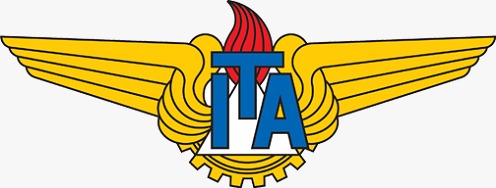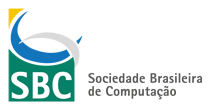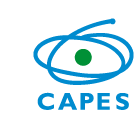Instructions for Manuscript Preparation and Submission
All submissions must be in PDF format and must follow the style format required by each track
- Papers submitted to the Research, Experience Reports, Software Quality Education tracks, and the CTDQS and CTICQS events must follow the two-column format, as instructed below.
- Papers submitted to WTDQS must follow the SBC paper format.
Papers submitted to SBQS may or may not identify the authors, depending on the anonymization policy of each track or parallel event, as follows.
- Papers submitted to the Research Papers track must not identify the authors and should be prepared for a double-anonymous review process, in which both authors and reviewers remain anonymous.
- For the Experience Reports and Software Quality Education tracks, authors have the option of identifying themselves in the submitted article. Reviewers will remain anonymous.
- Papers submitted to WTDQS, CTDQS, and CTICQS must identify the authors, meaning they should be prepared for a single-anonymous review process.
Instructions for anonymization can be found in the corresponding section below.
Papers should be written in Portuguese or English. Submissions in English are strongly encouraged.
The symposium proceedings will be indexed online. The SBQS Proceedings will be published in the SBC Open Lib (SOL) platform. The event coordination will submit the SBQS Proceedings for indexing on DBLP. WTDQS papers will be published only in the SBQS Companion Proceedings on the SBC Open Lib (SOL) platform.
Submissions should be made electronically through the JEMS3 system (https://jems3.sbc.org.br/events/368), including any additional documents when required.
Papers submitted to the Research, Experience Reports, and Software Quality Education Tracks must be in full conformance with the format instructions, must fit the track scope, and must not have been simultaneously submitted to another forum (scientific event or journal), nor have they been previously published.
Submissions that do not comply with the format guidelines or fall outside the scope of the tracks or parallel events will be rejected without review.
Important: Track and event chairs cannot submit to the same tracks or to the event they organize. The Program Committee members are allowed to submit.
Rebuttal
The review process for the Research, Experience Reports, and Software Quality Education tracks includes a rebuttal period, during which authors will have access to reviewers' comments. During this time, authors can provide arguments and responses to the comments and questions raised by the reviewers before the final decision on the acceptance or rejection of the paper is made.
Papers with a clear acceptance (i.e. all reviewers decided for paper acceptance) during the 1st review and discussion period will be accepted, and their authors will be notified on the date of the 1st Notification. The authors should ensure that all reviewers' points are observed in the final version.
The authors of the other papers will be invited to participate in the rebuttal phase, when the authors will have access to the reviewers' comments and may present arguments and responses to comments and questions submitted by the reviewers before the final decision to accept or reject the paper. The authors of these papers will be notified on the date of the 2nd Notification.
Instructions for Two-Column Format Manuscripts
All submissions must be in PDF format and must follow the two-column ACM format for conferences (sigconf), available in ACM SIG Proceedings Templates, with the adaptations indicated below.
The use of LaTeX and online tools such as Overleaf is strongly recommended. In this case, authors should:
- Use the acmart.cls class provided in the template with the conference format enabled in the preamble of the document: \documentclass[sigconf]{acmart}.
- Substitute \acmConference[Conference acronym 'XX]{Make sure to enter the correct conference title from your rights confirmation email}{June 03--05, 2018}{Woodstock, NY} for \acmConference[SBQS25]{Brazilian Symposium on Software Quality}{Nov 04--07, 2025}{São José dos Campos, SP}.
- Insert right below the above content the following lines, which will respectively suppress the copyright message, the ACM reference format on the first page, and the footer note about the conference in the first column.
- \settopmatter{printacmref=false}
- \setcopyright{none}
- \renewcommand\footnotetextcopyrightpermission[1]{}
- \settopmatter{printacmref=false}
- Remove \acmISBN{978-1-4503-XXXX-X/2018/06}.
- Insert the CCS Components, following the instructions in the template.
- Apply the ACM-Reference-Format.bst bibliography style provided in the template: \bibliographystyle{ACM-Reference-Format}.
If the authors choose to use the Word format, they must use the two-column version (Interim Template) with the modifications indicated in this example document or use the template available here. In this case, authors should:
- Ensure that the abstract does not contain any paragraph breaks.
- Insert the CCS Components, following the instructions in the LaTeX template.
- Update the headers on the second and third pages to reflect the details of this edition of the event (SBQS 2025, São José dos Campos, SP).
- Update the header on the second page to include the authors' last names, in accordance with the ACM citation guidelines.
- Update the header on the third page to include the title of the paper (if the title exceeds one line, a shortened version should be used).
We also strongly recommend installing the Linux Libertine font package.
Papers should be written in Portuguese or English. Submissions in English are strongly encouraged. Papers in Portuguese must have metadata, title, abstract, and keywords ONLY IN ENGLISH.
Unless the tracks or events specify specific rules, papers should not exceed 10 pages, including all figures, tables, appendices, and acknowledgments. Up to two additional pages can be utilized for references. Additional information can be found on the specific track pages.
Submissions for the Experience Reports track should be between 5 and 10 pages.
Instructions for SBC Format Manuscripts (WTDQS)
All submissions must be in PDF format and must follow the SBC paper format available at https://www.sbc.org.br/documentos-da-sbc/category/169-templates-para-artigos-e-capitulos-de-livros. Papers submitted to WTDQS must have a mandatory limit of 6 to 8 pages for doctoral works and 4 to 6 pages for master's works.
The paper must be submitted as a PDF file and must comply with the following instructions:
(i) Paper presenting in a clear and objective way the following topics: research context and motivation, problem characterization, research goals and questions, theoretical foundation, research methods (including data collection and analysis techniques), current state of work, related work, proposed solution and evaluation protocol, and expected (scientific and technological) contributions. The topics listed are essential to the paper, but they do not need to be presented in isolated sections or even in the order they were cited above. In the first page, the paper must also include the advisor(s) name(s), course degree (master's or doctoral), starting and finishing (planned) dates, and date of the proposal approval (qualifying exam);
(ii) Explanatory Video of up to 5 minutes to supplement the content of the paper. The student must present the video. The video must be uploaded via YouTube. When uploading the video to the YouTube account, the student must mark it as unlisted so
it will be accessible only to those who have the link. The authors should introduce the link at the end of the abstract in the paper.
Papers can be written in Portuguese or English. Moreover, the paper must contain title, author’s identification, affiliation, abstract in English, and abstract in Portuguese. Both abstracts must not exceed 10 lines each and must be presented in the first page of the paper.
Papers in a format other than PDF that exceeds the number of pages, violates formatting and content instructions, or are out of WTDQS scope will be desk rejected.
The papers must be submitted electronically via the JEMS system before the paper submission deadline.
Accepted works at WTDQS will be published in the SBQS Companion Proceedings at the SBC Open Lib Platform.
Further information can be found in the WTDQS Call for Papers.
Anonymization Instructions
As mentioned above, some tracks of SBQS adopt a double-anonymous review process. As such, submitted papers must omit any information that would allow their authors to be identified. To this end:
- Authorship information should be omitted (i.e., the paper should not include authors' names and affiliations, as well as other information that would allow authors to be identified, such as university name, project identification, or funding information);
- References to previous work by the authors should be presented in the third person (e.g., use "in the work of Sousa et al." instead of "in our work") or by anonymizing the reference in the references section (e.g., instead of "this work evolves the proposal of Sousa et al.", one can use "this work evolves our previous proposal presented in [ref]", and the reference [ref] can be included as "[ref] Reference omitted due to double-anonymous review process" in the references section);
- If the paper includes links to artifacts related to the work, only repositories or websites that do not allow identification of the authors should be cited. To anonymize GitHub-based repositories, you can use the anonymous service (https://anonymous.4open.science/).
Note that reviewers will not be encouraged to search other sources for references that identify the authors. Searching digital libraries or existing artifacts does not compromise the double-anonymous review process.
If the article is accepted, information omitted in the submitted version should be included in the final version.
When submission anonymization is single, authors must provide their names and affiliations in the submitted file. There is no need to anonymize supplementary materials provided alongside the article (e.g., study packages).
When submission anonymization is optional, if authors choose the single anonymization process, they should provide their names and affiliations in the submitted file. If authors choose the double anonymization process, the submitted work must conceal the authors' identities and follow the double anonymization instructions above.
Should you have any doubts regarding following the rules of anonymous submission or other inquiries, please feel free to reach out to the Program Committee Chairs of the corresponding track or parallel event
Code of Conduct for Authors and Use of AI-Assisted Technologies in Papers Submitted to SBQS
We emphasize that authors must adhere to the Code of Conduct for Authors in Publications of SBC (https://sol.sbc.org.br/index.php/indice/conduta).
Summary
|
Track/Event |
Paper Type |
Style |
Anonymization |
Pages |
Rebuttal |
|
Research Track |
- |
2 columns |
Double |
Up to 10 (*) |
Yes |
|
Experience Reports Track |
- |
2 columns |
Single or Double |
5 to 10 (*) |
Yes |
|
Software Quality Education Track |
- |
2 columns |
Single or Double |
Up to 10 (*) |
Yes |
|
WTDQS |
Master's |
SBC |
Simple |
4 to 6 |
No |
|
Doctoral |
SBC |
Simple |
6 to 8 |
No |
|
|
CTDQS |
Original Work |
2 columns |
Simple |
Up to 10 (*) |
No |
|
Extend Abstract |
2 columns |
Simple |
Up to 3 |
No |
|
|
CTICQS |
Original Work |
2 columns |
Simple |
Up to 10 (*) |
No |
|
Extend Abstract |
2 columns |
Simple |
Up to 3 |
No |
(*) Up to two additional pages can be used for references.












